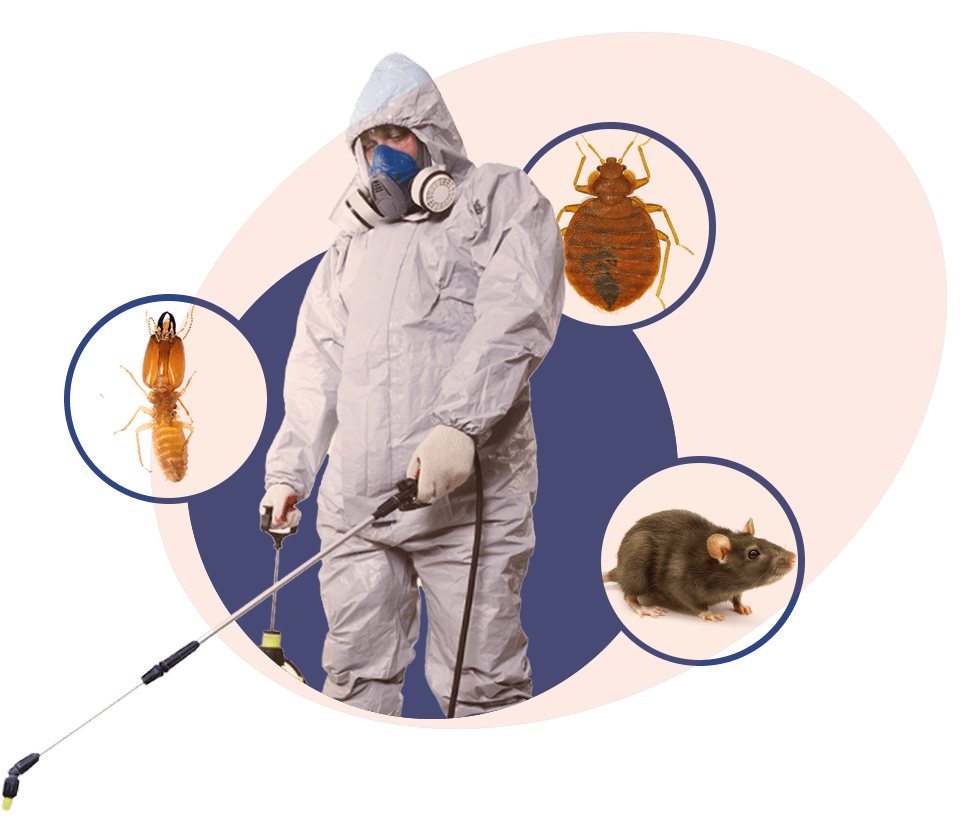Pest Control offering natural and safe treatment options.
Pest Control offering natural and safe treatment options.
Blog Article
Eco-Friendly Pest Control Approaches for Taking Care Of Wild Animals in Urban Areas
Urban areas frequently find themselves at the intersection of human activity and wildlife, leading to unique challenges in parasite monitoring. These methods not only protect the environment yet additionally improve neighborhood interaction in wildlife management. As urban populaces proceed to expand, recognizing the characteristics of wildlife interactions comes to be progressively important.
Understanding Urban Wild Animals Characteristics
Comprehending Urban Wild animals Characteristics is necessary for establishing effective and environment-friendly parasite control methods. Urban areas are increasingly becoming habitats for numerous wild animals types, driven by aspects such as environment fragmentation, food schedule, and human infringement. Acknowledging these characteristics enables a nuanced method to pest administration that straightens with eco-friendly principles.
Urban wildlife commonly includes types such as raccoons, squirrels, and birds, which adapt to city environments, locating particular niches in green spaces, parks, and also houses. Their presence can bring about problems with humans, specifically when they exploit human sources for food and shelter. Understanding the habits and ecological functions of these varieties informs methods that decrease negative interactions while advertising biodiversity.
Furthermore, acknowledging the interdependencies within city ecosystems aids in recognizing vital locations for habitat preservation and reconstruction. This knowledge contributes to the growth of incorporated insect administration (IPM) strategies that take into consideration the ecological equilibrium, consequently decreasing dependence on damaging chemicals. By fostering conjunction between humans and metropolitan wildlife, cities can produce healthier atmospheres that benefit both citizens and regional ecological communities, leading the way for lasting city living.
All-natural Repellents and Deterrents
All-natural repellents and deterrents use a sustainable alternative to conventional pest control methods by harnessing the power of nature to maintain undesirable types at bay. These environment-friendly remedies commonly make use of plant-based active ingredients, essential oils, and various other normally taking place compounds that prevent parasites without damaging the atmosphere.
One efficient natural repellent is peppermint oil, which is recognized to drive away rats and pests. Its solid fragrance is unpleasant to many parasites, making it a preferred option for urban settings. Similarly, vinegar and citrus peels can act as deterrents, as their strong smells are normally unattractive to different wildlife.
Additionally, diatomaceous planet is an all-natural powder that can be spread in areas prone to pest task, effectively drying out and discouraging bugs without posing risks to non-target species. Additionally, garlic sprays and neem oil are acknowledged for their capability to drive away a vast array of pests, including both pests and bigger wildlife.
Executing these all-natural repellents not only minimizes dependence on chemical pesticides but also advertises a healthier urban environment, fostering a much more well balanced conjunction between people and wildlife. By making use of these methods, metropolitan locations can effectively handle parasite populaces while reducing ecological influence.
Habitat Adjustment Methods
Reliable environment adjustment strategies play a vital function in sustainable bug monitoring by modifying the environment to make it less favorable to pest problems. By recognizing the ecological dynamics of urban areas, homeowner can apply tactical alterations that prevent parasites while advertising biodiversity.
(Flea control Port Charlotte)One key technique includes preserving correct sanitation. This includes routine waste elimination, securing trash can, and removing standing water to decrease breeding websites for bugs and rats. Additionally, landscaping methods such as selecting native plants can improve eco-friendly balance, offering habitats for advantageous microorganisms while decreasing resources for insects.
Another vital approach is to secure entrance points in buildings. Inspecting and fixing splits in structures, wall surfaces, and windows can substantially minimize insect access. Producing physical barriers, such as fencings or plant buffers, can inhibit wild animals motion right into human-inhabited areas.
Integrated Bug Administration Practices
Building upon environment modification techniques, incorporated parasite administration (IPM) methods provide a holistic strategy to managing pest populations while reducing ecological effect. IPM incorporates different strategies, consisting of biological, social, mechanical, and chemical controls, to attain effective parasite management.
Organic control involves the intro of natural killers or bloodsuckers to lower bug populations. Social techniques, such as plant turning and cleanliness, disrupt pest life process and reduce their habitats - Pest control service. Mechanical controls, like catches and obstacles, offer prompt alleviation from pest stress without chemical treatment
Chemical controls are made use of as a last resort, concentrating on targeted applications that restrict harm to non-target types and the setting. The selection of eco-friendly pesticides, when needed, is integral to the IPM framework. Furthermore, keeping an eye on parasite populations and examining possible damages aids educate decision-making, ensuring that interventions are prompt and reliable.
Area Participation and Education

(Lawn pest control Port Charlotte)Workshops and educational sessions can gear up citizens with expertise about native types, environment conservation, and efficient safe pest management methods. Cooperation with colleges, local organizations, and federal government agencies further boosts educational outreach, ensuring that essential details reaches varied audiences.
In addition, community-led efforts, such as community clean-up days and environment remediation tasks, not only promote biodiversity but additionally reinforce community connections. Pest Control. By motivating residents to share their experiences and monitorings, neighborhoods can establish targeted methods that resolve certain neighborhood insect issues
Incorporating responses from citizens into bug management plans allows a more responsive and flexible strategy to wildlife difficulties. Eventually, notified and engaged areas are essential to attaining long-term success in environment-friendly bug control, resulting in much healthier city settings that appreciate both human and environmental requirements.

Conclusion
In conclusion, environmentally friendly pest control comes close to deal lasting services for handling city wild animals. By prioritizing environment website here adjustment, utilizing natural repellents, and applying incorporated insect monitoring practices, neighborhoods can cultivate a harmonious coexistence with local fauna.
Report this page